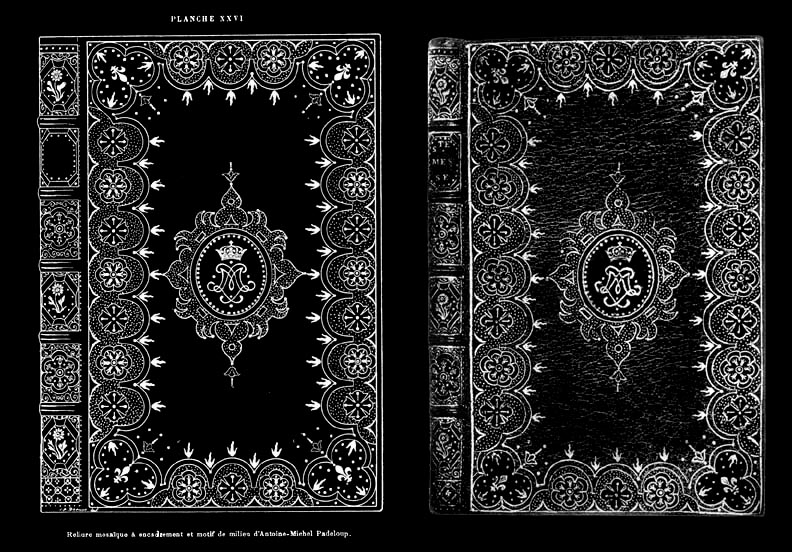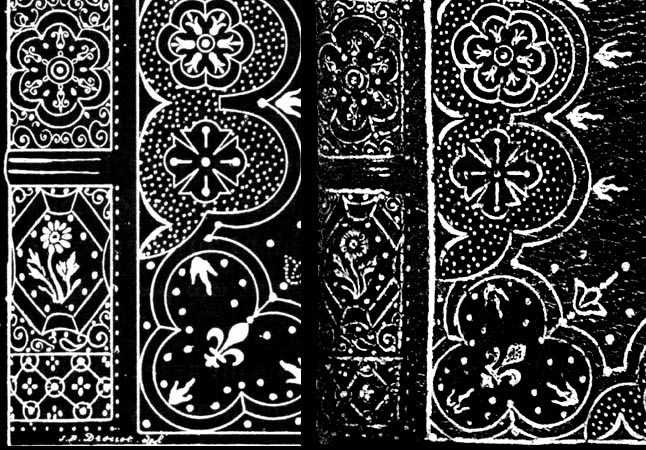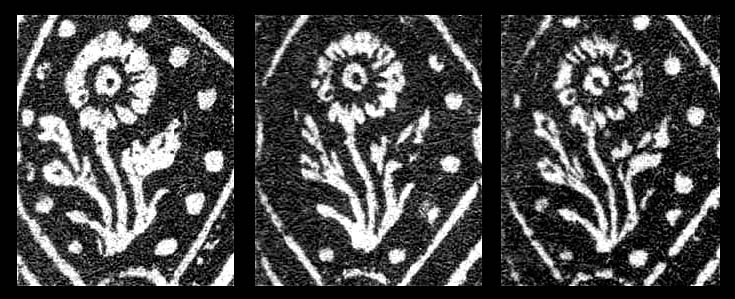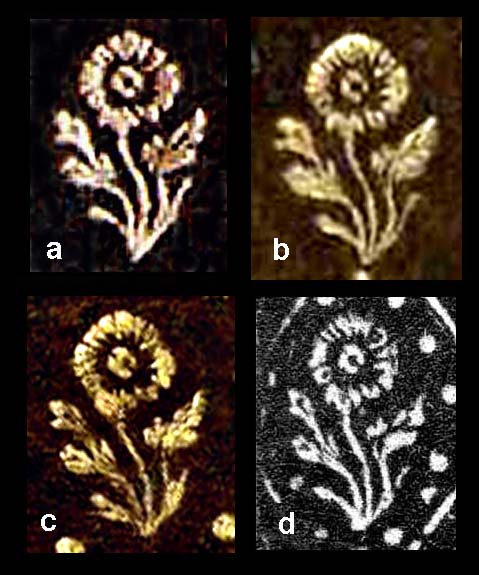To start this study of the bindings that have been attributed to Padeloup, I would like to first point out some examples that have been put forward by experts in this field. The first is that of Ernest Roquet, more popularly known by the nom de plume of Thoinan. His book Les Relieurs Française (1500-1800) published in Paris 1893, now appears to be a sort of bible in terms of reference to the first three centuries French decorative bookbinding. This chronicle covers the history, and more especially biography, as well as serving as a sort of artistic critique of the period. Certainly the most complete and detailed study ever published, it is today still highly useful and very expensive. (A book which you can only hope to find in a library as the few copies that you can find listed online are $700 -$1000, a price that eliminates most who were considering its acquisition purely for research purposes.) Fortunately I discovered that there was one high quality reprint made by Skatkine Reprints Genève in 1970, and I was lucky enough to find one; however, these appear to be even more rare than the original!
The biographic material in this book is extensive and particularly good in the case of Padeloup, where I discovered a detail which has not much to do with bookbinding but is more of an insight into the person himself . Thoinan records on page 362, among other details, that Padeloup was married twice, the second marriage being to a girl of 19 while he was over 65! Bearing in mind that the average lifespan at that time was less than 40, this seems quite remarkable. Further we learn that 6 children resulted from this marriage, and that the last was born on May 27th, 1759. This revelation is much magnified by the fact that Padeloup died on September 7th, 1758 at the age of 72, or 8 months and 19 days before the birth of the last child.
I suppose that such an active person may have been still busy with his work right up till the time of his death. We learn that when he died he was very much in debt, mainly to Rene Dubuison and his son Paul for work that they executed on his behalf. However it is also reported that Padeloup's young wife carried on the business nevertheless, for many years afterwards still retaining the title of Relieur du Roi even some 20 years after her husband's death.
In his book Thoinan presents illustrated binding examples rather than actual photographs of the bindings themselves, and thus it's not possible to make a true comparative study of the tool imprints from these illustrations. However, very fortunately, another author and expert Étienne Deville, has published photographic reproductions of bindings which are very likely to be those which served as the models for the illustrated examples.
A 1931 Paris publication entitled La Reliure Française (volume 2, Le XVIIIeme et le XIXeme Siécle), by Étienne Deville, includes a number of important plates. The first 4 are devoted to the bindings of Padeloup and it is perhaps no surprise that the first two plates appear to be nearly identical to Thoinan's illustrated Padeloup examples. In Comparative Diagram 1, I show Thoinan's Planche XXV which is a black and white illustration by J.B. Drouot of the binding reproduced in Deville's Planche I. Drouot's illustration is not a true copy of the original but a sort of idealized or perfectioned rendering. For comparative purposes I have inverted the original black on white illustration to a white on black presentation.
|





